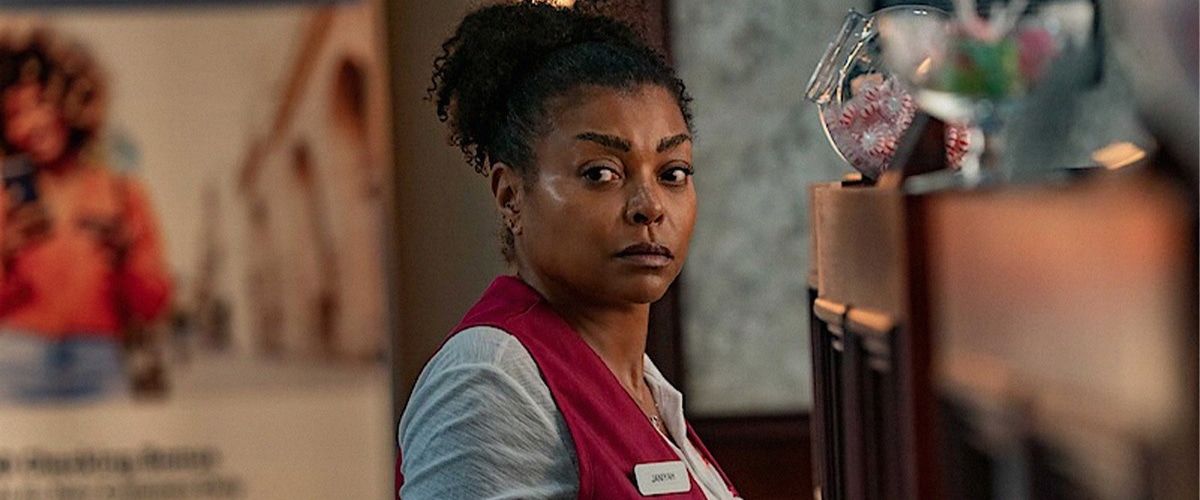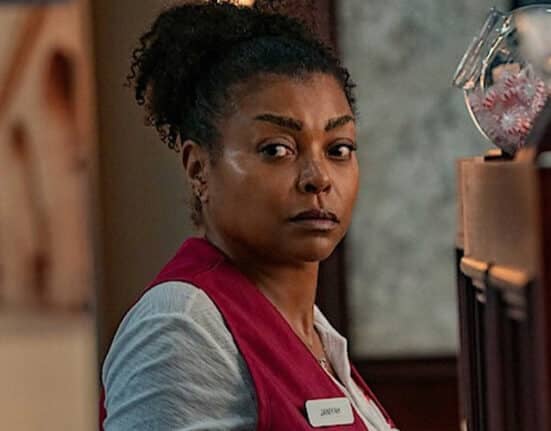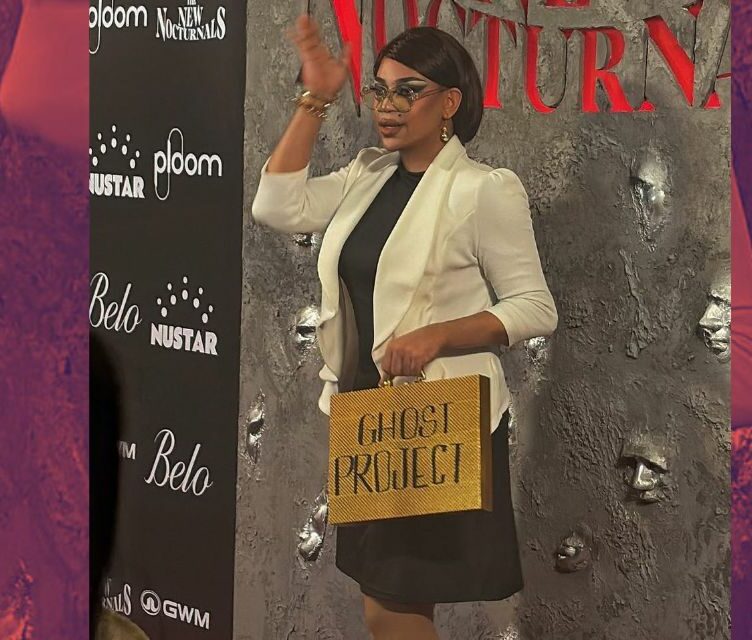WARNING: Possible spoilers
WE all have a breaking point.
For some, its most concrete apparition comes as a quiet cry in the bathroom. For others, it’s snapping at a loved one over something trivial, something that is not really an issue at all.
But in “Straw,” the breaking point is something far more public, emotional, and dangerous. It involves a mother barricading herself in a bank with a gun.
Tyler Perry’s latest film took the internet by storm. It sparked discussions online for a diverse range of societal issues about mental health, poverty, and gendered expectations.
Social media threads are buzzing with debates over the film’s execution and its morally complex protagonist. But perhaps the most compelling conversation centers on this: does Janiyah Wiltkinson still deserve our empathy, even after everything she’s done?
While some dismiss the film as a mere “trauma dump,” it calls for a more nuanced and layered reading—one that takes seriously the urgent concerns it raises. I acknowledge that Janiyah’s actions shouldn’t be excused or validated, but we must not completely ignore how structural neglect, economic precarity, and racialized expectations slowly corrode a person’s sense of control.
I will argue that Janiyah’s breakdown isn’t random or melodramatic—it’s a real and possible outcome for a society that expects marginalized women to endure in silence, no matter the cost.
In this article, we will explore how the film visualizes the psychological cost of class struggle, and how institutions and gendered expectations conspire to silence those who are suffering until they explode.
What’s up with the title?
“Straw” is a psychological drama that tells the story of Janiyah Wiltkinson, a single mother pushed to her breaking point over the course of a harrowing day.
The film follows her story as she faces the challenges of an average life of poverty: eviction, financial instability, her daughter’s medical emergency, and institutional neglect.
But what begins as an ordinary struggle to survive spirals into a hostage situation at the bank, as Janiyah gets caught in the web of a huge and dangerous misunderstanding.
The title “Straw” sounds simple and unremarkable—honestly, I probably wouldn’t have clicked on it if I hadn’t already run out of other things to watch on Netflix.
But as I got deeper into the story and witnessed the plot twist at the end, the title began to make perfect sense. “Straw” isn’t just a random word— it’s a metaphor. The one we use for many of our English idioms.
The plot twist at the end of the film, the very thing that Janiyah learned after her mother called her, was her “final straw” or the “straw that finally broke the camel’s back.” It was the point of no return for Janiyah— a line that drew the before and after of her life.
Another idiom that could explain the title would be “grasping at straws” as this is literally what Janiyah went through before she snapped. Janiya was grasping at straws— grasping at anything, anything at all— for her and her daughter’s survival.
And that’s what “Straw” captures so well— not just the breaking point but most importantly the desperation that comes before it.
The mental cost of being at the bottom
The film opens with stark images of poverty: a cramped, cluttered apartment, unwashed dishes piling up in the sink, a small fan struggling against the heat, and an eviction notice among the scattered things.
Even before we meet Janiyah, we already know who she is. Maybe not the specifics—her name, her age—but the life she’s living feels familiar. We’ve met her before. Maybe she’s a friend, a classmate, a neighbor, a distant relative.
Maybe, at some point, she was even one of us.
And when we finally meet her, she’s already knee-deep in crisis. Financial insecurity is woven into every part of her day— her paycheck hasn’t come through, her car registration has expired, her daughter is sick, and she’s racing between responsibilities with no time, no help, and no room to breathe.
She has no one to turn to but her friend at the store who was also struggling financially.
And so, when she snapped at the bank while trying to cash her check—and everything spiraled out of control—it didn’t feel shocking. It felt inevitable.
Her breakdown wasn’t just emotional; it was economic. In fact, it calls attention to something we often brush aside— the intersection of class struggle and mental health.
Here in the Philippines, we’ve all heard the dismissive joke—“Yung mental health, mental health na ’yan, pangmayaman lang ’yan.”
It’s said with a laugh, but it reveals a hard truth: for many, mental health is seen as a luxury—something you can only afford to care about if you’re not already consumed by survival.
Straw confronts that mindset head-on. It shows how poverty doesn’t just exhaust the body—it wears down the mind. And when there’s no room to rest, no support, and no safety net, snapping isn’t a surprise. It’s an outcome.
For the financially challenged and marginalized, seeking help isn’t just difficult—it’s often out of reach. Mental health resources are expensive, and public options are few and far between.
But the problem goes beyond access.
In many systems—including our own—mental health still isn’t treated as a valid reason to pause or ask for care. There’s stigma attached to even acknowledging it. You can’t just tell your boss you’re not okay and need a break—doing so risks being laughed at, dismissed, or told to toughen up: “It’s all in your head.”
But the science is clear— it’s not. Mental health is health. And yet, the system still refuses to treat it as such, especially for those who can’t afford to fall apart.
The intersection of race, gender, and systemic inequality
Janiyah’s breakdown wasn’t just caused by personal struggles alone but also political ones. Many netizens argue that “Straw” excuses Janiyah’s violation of the law by validating her crime through the exploitation of her struggles.
But that’s not really the case. Her actions at the bank were dangerous and undeniably wrong—but the film doesn’t let us forget that. What “Straw” does is something more difficult: it asks us to hold two truths at once.
That what she did was unacceptable—and that what led her there was, too. The point isn’t to absolve her, but to expose the conditions that created the desperation.
By portraying her with complexity, “Straw” challenges the idea that people who do bad things are inherently bad. It forces us to consider how often society criminalizes collapse, especially when it comes from women like Janiyah—Black, poor, and unseen—who have long been expected to survive without complaint.
The film does not excuse her outburst— Janiyah’s still going to jail after the stunt she pulled and she recognizes it. What it does instead is reveal the architecture of Janiyah’s collapse.
She isn’t a hero. She isn’t a villain. She’s someone the world forgot, until she made herself impossible to ignore.
Carrying the straws
So what would it look like to build a world where no one has to carry so many “straws” alone?
It would mean reimagining a society where care isn’t rationed, where mental health is treated as a right—not a luxury—and where systems respond before people collapse.
It would require us to dismantle the belief that strength means silence, and to finally recognize that suffering in isolation isn’t resilience—it’s abandonment.
“Straw” doesn’t offer solutions. But it dares to ask the right questions.
And maybe the most urgent one is this: how many more people have to break before we start listening?
How useful was this post?
Click on a star to rate it!
Average rating 5 / 5. Vote count: 2
No votes so far! Be the first to rate this post.
We are sorry that this post was not useful for you!
Let us improve this post!
Tell us how we can improve this post?






